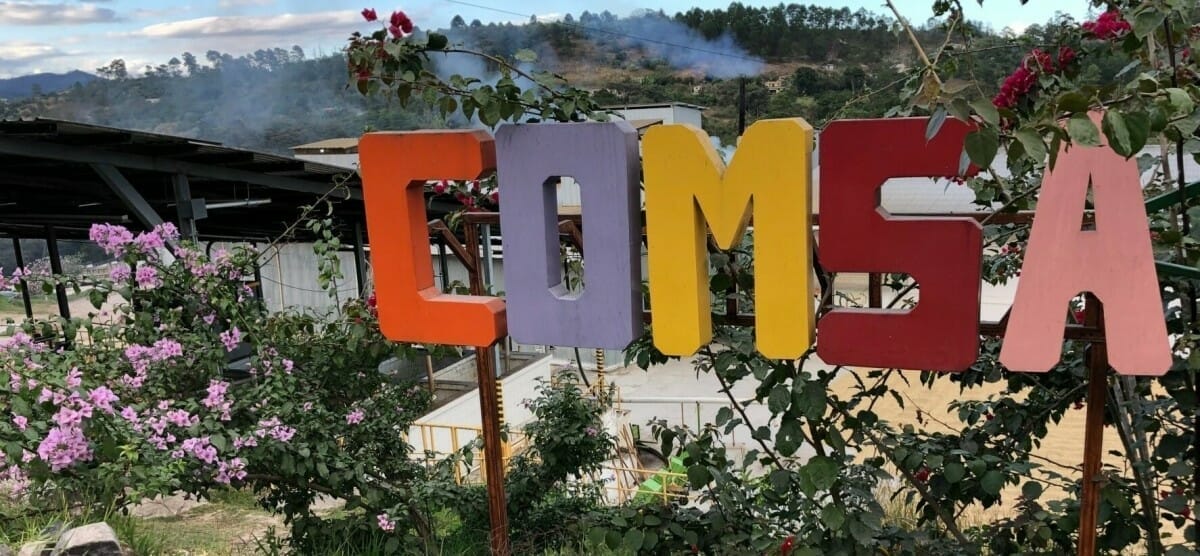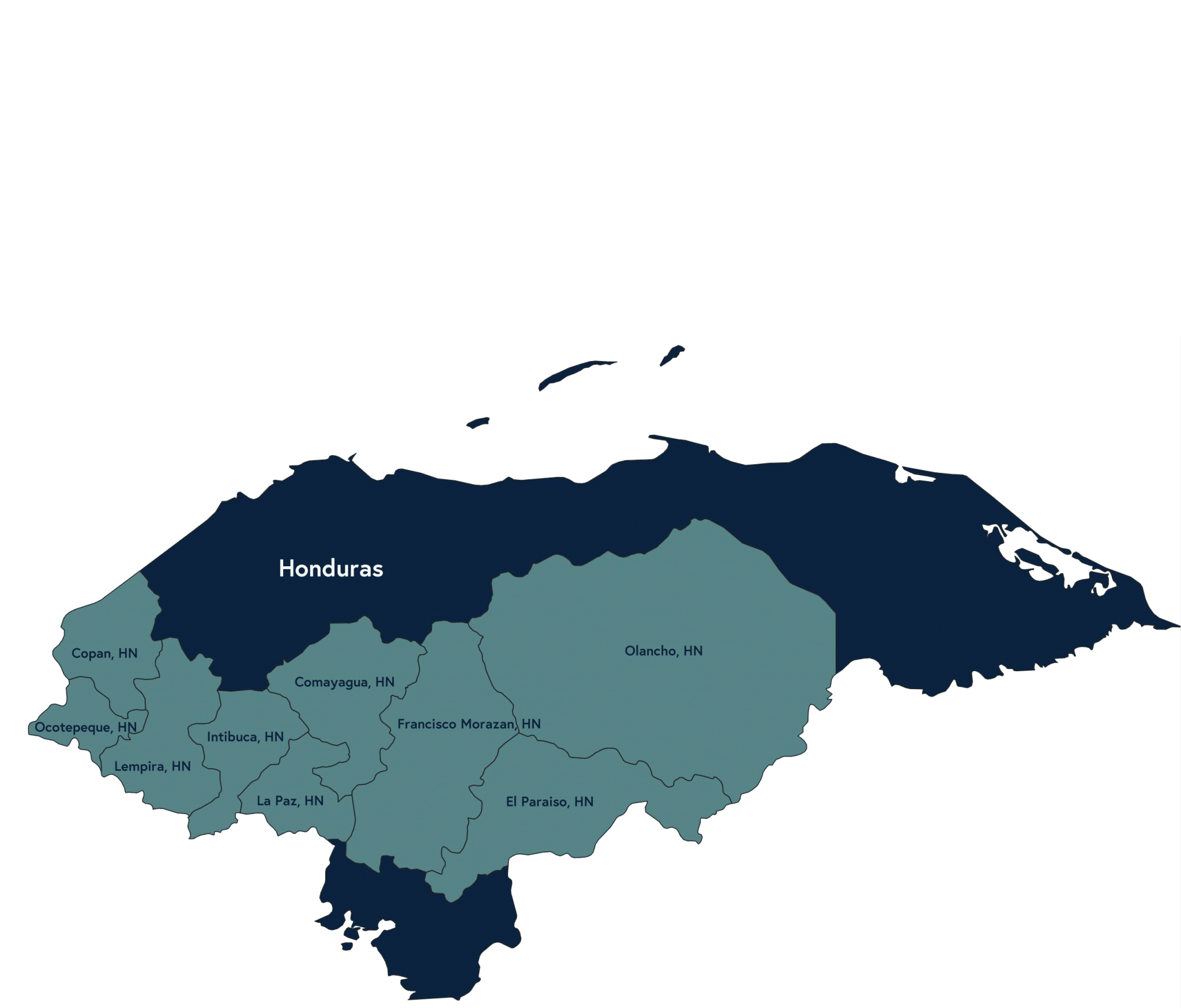No products in the cart.

Origin Profile: Honduras
Honduras is a relatively small but efficient coffee producer. It ranks as the 6th largest producer globally, and 4th largest Arabica producer. Flavors range from apporachable chocolate and nutty, to exotic tropical fruits.
| Harvest | November - June |
| Arrival | February - July |
| Number of Producers | ~105,000 |
| Average Farm Size | 3.2 Hectares |
| Annual Production | 6.1 Million 60 Kilo Bags |
| Common Varieties | Pacas, Bourbon Caturra, Catuai Typica, Bourbon Lempira, Paraneima |
| Grades | High Grown (HG) - <1,200m Strictly High Grown (SHG) - >1,200m |
| Copan | The Copan region includes Copan, Ocotepeque, and Parts of Lempira, Cortes and Santa Barbara. The elevation lies between 1,000 and 1,500m and mostly produces coffee that is approachable and mild with chocolate tones and a round body. |
| Opalaca | This region encompasses Santa Barbara, Intibuca and Lempira. The elevation lies between 1,100 and 1,500m. The coffee has a more delicate acidity with fruitier flavors and lighter body. |
| Monteciello | La Paz, Comayagua, Santa Barbara, and Intibuca are withing the Monteciello growing region. The elevation is he highest at 1,200 to 1,600m. The coffee produced here is more vibrant with a velvety body. |
| Comayagua | This region covers parts of Comayagua and Francisco Morazan. It lies between 1,000 and 1,500m. Coffees found here are chocolatey with citrus notes and a creamy body. |
| Paraiso | The Paraiso region is comprised of parts of Choluteca and Olancha and El Paraiso. The elevation ranges from 1,000 to 1,400m. The coffee is sweet and mild with citrus flavors. |
| Agalta | Agalta covers parts of Olancha and Yoro. It rises to 1,000-1,400m. The coffee produced here is chocolatey and sweet with light acidity |
| Data Based on MY2019/2020 | |

Coffee most likely first arrived in Honduras in the 18th Century, but at this time, production was very low and limited to small holders producing for local consumption. Honduras lacked the unity and capital required to support large scale plantations that could be found in neighboring countries. Products like tobacco, silver, and hardwood were the primary exports because of their relatively higher prices, but the companies were largely foreign-owned and generated little money for the local economy.
Moving into the 19th century, political turmoil and civil wars drained the country’s resources, and prevented the development of major domestic infrastructure. In 1838, Honduras gained absolute independence from the Central American Federation, but the country was saddled with massive debts.
In the 1870s Banana production on the northern coasts was becoming increasingly profitable, and American fruit companies took notice. They began to purchase land at favorable rates in return for developing the local infrastructure. Over time, these agreements became increasingly favorable to the Americans with their bananas becoming exempt from taxes, siphoning money from the central government. With growing American investment in the country, the Unites States government started to increase its presence as well, especially to mediate conflict with Honduras’ neighbors: Nicaragua, Guatemala, and El Salvador.
Eventually, the United States became involved in settling the vast amounts of debt the Honduras government owed. Their resolution was to allow bankers to control the railways in Honduras, while the US controlled the customs revenue. These terms were voted against by the congress of Honduras, and in an effort to find another source of revenue, the President sought to end the tax exemption of foreign banana companies. In response, Samuel Zemurray, owner of Cuyamel Fruit Company, recruited the ex-president of Honduras and hired American mercenaries to overthrow the government and install a military dictatorship loyal to American Fruit interests in 1912. By 1913, Honduras was definitively a “banana republic” with 66% of exports being bananas. Over the next 40 years, Honduras would experience several more contested elections and political turmoil would continue. The banana industry peaked in 1930, but rapidly declined during the great depression.
With the end of WWII, Honduras agricultural industry began to recover, especially the cattle industry because of high demand in the United states for Beef. Land began to be concentrated in the hands of wealthy ranchers who primarily used it for pasture. This encouraged Land reform movements and a new coffee sector began to take shape. During the 1950s USAID and the UN’s National Development Bank worked to support the small farmers to expand coffee production and processing infrastructure.
In 1967 AHPROCAFE was formed, the Association of Honduran Coffee Producers. This would be followed by IHCAFE, the Honduran Coffee Institute, currently in operation. IHCAFE provides training and access to capital for coffee farmers. The domestic programs and investments helped Honduras to capitalize on the high prices of coffee that occurred through the 1970s. In the 1980s, IHCAFE and USAID promoted the replanting of coffee farms to Caturra, Catuai, and Villa Sarchi. From 1950 to 1990, coffee production in Honduras grew 807% and coffeelands grew 129% in area.
In 1998 Hurricane Mitch decimated 70% of Honduras’ agriculture, impacting many coffee farms. Hurricane Mitch’s impacts were amplified by the coffee price crash of 1999. In 2000, the Government of Honduras nationalized IHCAFE and by 2002, it had issued over $20 million in loans to farmers to keep them from abandoning their properties and avoid foreclosure. A majority of the repayments of these loans capitalize the National Coffee Fund that is designed to support the coffee sector. It is responsible for the maintenance and construction of roads along with implementing programs to assist smalls farmers in land title issues, constructing solar dryers, and training in agroforestry and community forestry.
With 61% of Honduras’ coffee farms above 1,200m, it is ideal for growing high quality coffee. In 2004, Honduras began working with Cup of Excellence to showcase its highest quality producers. In 2019, nine producers entered coffees that scored above 90 points. Over the last 20 years Honduras has grown to not only one of the largest producers of coffee, but a producer of some of the highest quality coffee in the region.
Moving into the 19th century, political turmoil and civil wars drained the country’s resources, and prevented the development of major domestic infrastructure. In 1838, Honduras gained absolute independence from the Central American Federation, but the country was saddled with massive debts.
In the 1870s Banana production on the northern coasts was becoming increasingly profitable, and American fruit companies took notice. They began to purchase land at favorable rates in return for developing the local infrastructure. Over time, these agreements became increasingly favorable to the Americans with their bananas becoming exempt from taxes, siphoning money from the central government. With growing American investment in the country, the Unites States government started to increase its presence as well, especially to mediate conflict with Honduras’ neighbors: Nicaragua, Guatemala, and El Salvador.
Eventually, the United States became involved in settling the vast amounts of debt the Honduras government owed. Their resolution was to allow bankers to control the railways in Honduras, while the US controlled the customs revenue. These terms were voted against by the congress of Honduras, and in an effort to find another source of revenue, the President sought to end the tax exemption of foreign banana companies. In response, Samuel Zemurray, owner of Cuyamel Fruit Company, recruited the ex-president of Honduras and hired American mercenaries to overthrow the government and install a military dictatorship loyal to American Fruit interests in 1912. By 1913, Honduras was definitively a “banana republic” with 66% of exports being bananas. Over the next 40 years, Honduras would experience several more contested elections and political turmoil would continue. The banana industry peaked in 1930, but rapidly declined during the great depression.
With the end of WWII, Honduras agricultural industry began to recover, especially the cattle industry because of high demand in the United states for Beef. Land began to be concentrated in the hands of wealthy ranchers who primarily used it for pasture. This encouraged Land reform movements and a new coffee sector began to take shape. During the 1950s USAID and the UN’s National Development Bank worked to support the small farmers to expand coffee production and processing infrastructure.
In 1967 AHPROCAFE was formed, the Association of Honduran Coffee Producers. This would be followed by IHCAFE, the Honduran Coffee Institute, currently in operation. IHCAFE provides training and access to capital for coffee farmers. The domestic programs and investments helped Honduras to capitalize on the high prices of coffee that occurred through the 1970s. In the 1980s, IHCAFE and USAID promoted the replanting of coffee farms to Caturra, Catuai, and Villa Sarchi. From 1950 to 1990, coffee production in Honduras grew 807% and coffeelands grew 129% in area.
In 1998 Hurricane Mitch decimated 70% of Honduras’ agriculture, impacting many coffee farms. Hurricane Mitch’s impacts were amplified by the coffee price crash of 1999. In 2000, the Government of Honduras nationalized IHCAFE and by 2002, it had issued over $20 million in loans to farmers to keep them from abandoning their properties and avoid foreclosure. A majority of the repayments of these loans capitalize the National Coffee Fund that is designed to support the coffee sector. It is responsible for the maintenance and construction of roads along with implementing programs to assist smalls farmers in land title issues, constructing solar dryers, and training in agroforestry and community forestry.
With 61% of Honduras’ coffee farms above 1,200m, it is ideal for growing high quality coffee. In 2004, Honduras began working with Cup of Excellence to showcase its highest quality producers. In 2019, nine producers entered coffees that scored above 90 points. Over the last 20 years Honduras has grown to not only one of the largest producers of coffee, but a producer of some of the highest quality coffee in the region.



